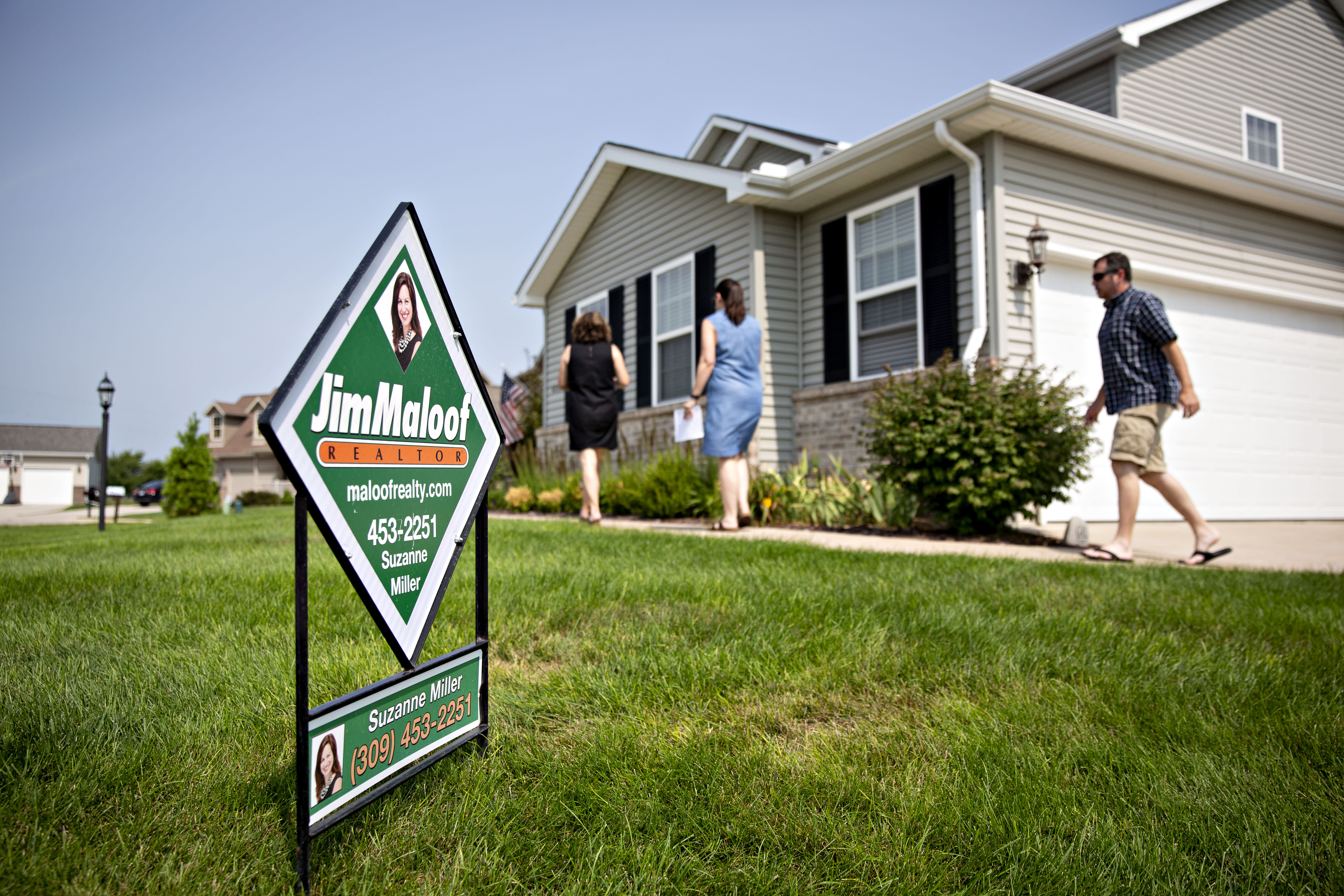If you’ve been considering a mortgage with an adjustable rate, your reasons for going that route might be disappearing.
As recessionary fears cause longer-term interest rates to hover near or below short-term rates, the advantage that typically comes with adjustable rate mortgages has shrunk — or entirely disappeared — at some lenders. ARMs, as they are called, are based on short-term interest rates compared with fixed-rate mortgages’ reliance on longer-term rates.
“Normally I would say that if you only plan to own the house for, say, five years, maybe you could do a five-year ARM if rates are lower than a fixed rate — which they usually are,” said Ed Snyder, a certified financial planner and cofounder of Oaktree Financial Advisors in Carmel, Indiana.
“But if you can find a fixed rate that’s lower or the same as an adjustable, even if you only plan to own the home for a short time, I can’t see why you would consider an ARM,” Snyder said.
Prospective homebuyers in Dunlap, Illinois.
Daniel Acker | Bloomberg | Getty Images
At last count, 6.4% of mortgage loan applications were for ARMs, according to the Mortgage Bankers Association.
The average introductory interest rate on a five-year ARM is 3.35%, down slightly from 3.43% a week ago, according to the Mortgage Bankers Association. That remains lower than the average rate on a traditional 30-year mortgage of 3.9% for loan balances of $484,350 or less and 3.88% for those above that (so-called jumbo loans), although the spread has shrunk.
The slide in mortgage rates comes amid continually rising home prices. The median price of homes listed for sale has reached $289,900 and the median price of sold homes is $235,500, according to Zillow. The company forecasts prices to climb by 2.2% over the next year, compared with a 5.2% gain over the last 12 months.
.1566566977906.png)
If you do find an ARM that looks better than a fixed-rate mortgage, there are some aspects of the loan you should understand. For starters, the initial rate is only fixed for a set number of years (i.e., generally three, five, seven or 10 years).
After that, the rate could change. That uncertainty makes an ARM a riskier proposition than a fixed-rate mortgage.
“If you go with an adjustable rate for whatever reason, that rate could adjust up later, instead of down,” Snyder said.
The ARM adjustment that kicks in after the initial fixed-rate period is based on a widely used interest-rate index, along with the specific terms of your loan. Commonly used benchmarks include the one-year Libor, which stands for the London Interbank Offered Rate, or the weekly yield on the one-year Treasury bill.
Mortgage lenders also add an agreed-upon percentage point (called the margin) to arrive at the total rate you pay. So at the beginning of the loan, if the index is at 1% and your margin is 2.75%, you’ll pay 3.75%.
After the end of the guaranteed rate, say the index is at 2%. Adding your margin would mean paying 4.75%. And if the index had jumped to, say, 5%? Whether your interest rate could jump to 7.75% (5% index plus 2.75% margin) depends on the specific terms of your loan.
An ARM generally comes with caps on the annual adjustment and over the life of the loan. However, they can vary among lenders, which makes it important to fully understand the terms of your mortgage (see common terms below).
Initial adjustment cap. This cap says how much the interest rate can increase the first time it adjusts after the fixed-rate period expires. It’s commonly either 2% or 5% — meaning that at the first rate change, the new rate can’t be more than 2 (or 5) percentage points higher than the initial rate during the fixed-rate period.
Subsequent adjustment cap. This clause shows how much the interest rate can increase in the adjustment periods that follow. This number is commonly 2%, meaning that the new rate can’t be more than 2 percentage points higher than the previous rate.
Lifetime adjustment cap. This term means how much the interest rate can increase in total over the life of the loan. It often is 5%, meaning that the rate can never be 5 percentage points higher than the initial rate. However, some lenders may have a higher cap.
Additionally, even if you plan to sell the house before the initial interest rate expires, you should factor in the fees and points you pay to the lender at closing. (One point is equal to 1% of the mortgage amount).
For illustration purposes only: Say you plan to finance $200,000 and you could get a fixed-rate mortgage with 4%, or an ARM with 3.5% guaranteed for the first five years. After five years with the fixed-rate loan, you’d pay about $44,760 in interest. With the ARM, you’d pay $38,975 — a savings of $5,785.
However, say the 4% fixed mortgage came with no extra lender costs at closing, but the ARM did. If that amount were more than that $5,785, you wouldn’t come out ahead at the five-year mark.
Even if your initial interest rate is palatable, make sure you know the highest payment you could be liable for if rates rise and you have neither sold nor refinanced before the end of the guaranteed rate. A Truth in Lending disclosure, which your lender must give you within three days of your loan application, should include this information.
(CNBC’s John Schoen contributed to this report.)
More from Personal Finance:
Dreaming of a US vacation home? 10 best places to invest
These cities gave the most money to charity in 2018
When unpaid debt can cut your Social Security payments

